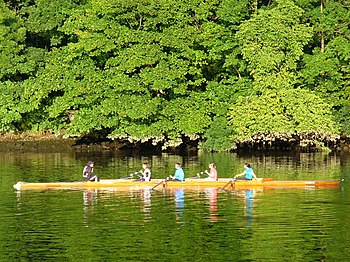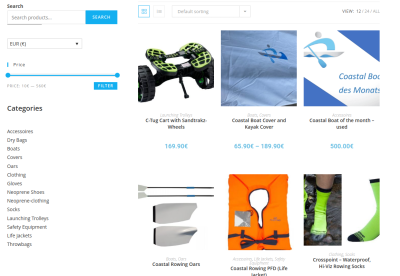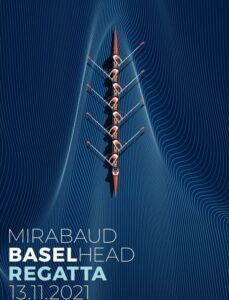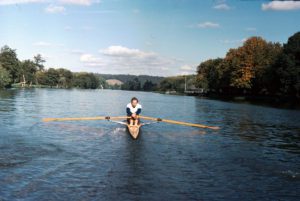A Guest Post by Howard Aiken, The Rowing Club Blog

This post may prove controversial, but I’m going to post it anyway because I genuinely think it is important.
I regularly coach squads of adult beginners in sweep-oar rowing. From their very first session in the rowing tank I insist that they change seats regularly to ensure that they row on ‘both sides of the boat’. I also insist that, for them, the correct answer to the question ‘Which side of the boat do you row?’ is ‘Both’. For this I must thank the coaches who taught ME to row, through whom I learned that to be the best rower I could be, I should aim to be able to row in any seat in any boat, whether sweep oar or sculling. No beginner ever leaves one of my courses saddled with the impression that he or she can only row on one side.
By way of contrast, I meet and coach many novice rowers who, while they may have been rowing for only a couple of seasons, have apparently always rowed as ‘stroke-side’ or ‘bow-side’ and are convinced that they can’t row on the other side. Many of these ‘one-side only’ rowers identify themselves as ‘bow-siders’ or ‘stroke-siders’ with a kind of pride which goes way beyond any idea of ‘preference’. It is not that they simply ‘prefer’ to row one side or the other. They are bow-siders or stroke-siders in the same way that they are male or female and suggesting that they change sides for an outing is actually offensive to them.
Lazy Coaches are to blame
It really isn’t their fault. I blame lazy coaches whose lives are made easier if rowers are always on the same side (or even in the same seat!). Coaches save themselves some work if they only have to teach rowers to row on one side and so they go on producing generation after generation of one-armed rowers.
Let me be clear. Human beings are not perfectly symmetrical and we all differ in the degree and orientation of our asymmetry. So it is perfectly natural that when it comes to rowing, many of us will have a preference for one side of the boat or the other. A preference is not a problem. Convincing perfectly healthy athletes that they can ONLY row on one side IS a problem. These rowers are in effect being ‘disabled’ by poor coaching. I put the word ‘disabled’ in inverted commas here because I’m using it as the opposite to ‘enabled’, but coaches and rowers alike should be aware that years of rowing on only one side carries real risks of exacerbating an existing asymmetry, with adverse consequences for the rower (http://bit.ly/1ibjVkR, http://bit.ly/1lxnFAZ).
The time to change is NOW
Of course most coaches aren’t doing this deliberately. They are doing it because no-one is complaining about it. By the time the rower is suffering the consequences of always rowing on the same side the coach who caused the problem is long gone. Well, in my view, the time has come to complain. Coaches need to put their rowers’ long term health before their inclination to take the shortest route to seat allocation. They need to take pride in producing capable, adaptable rowers able to perform well on either side. Sweep-oar rowers need to start taking responsibility for their own health and actively volunteering to change sides regularly. If, in your regular competition boat, you always row on one side, use every opportunity to establish yourself in the coach’s mind as “useful in any seat”. It won’t take long. Most of the rest of the crew will stick with their ‘favourite’ side and your coach will be grateful for someone willing to be flexible when substitutions have to be made due to absences or injury.
Sadly, there are rowers out there for whom this advice may already be too late. They are already convinced that they simply can’t row on the other side of the boat. Never have, never will. For the rest, the most difficult part of this proposal is getting ill-advised (i.e. badly-coached) rowers to let go of the idea that identifying themselves as exclusively bow-side or stroke-side is some kind of badge of elite specialist status. Have a preference by all means, but appreciate that to be the best rower you can be, you should be able to row well in any seat.
And if your coach actively opposes your aim to be the best you can be (surely a vanishingly small probability), find yourself a new coach.








This Post Has 18 Comments
Finally !!!!
As a rower , a coach and a Co-Ordinator I am so sick of “I can only row ______side ”
I agree totally that it isn’t good for an athlete to only row on the one side of the boat .
The longer you do so the more ” Muscle Bias” you build up which can lead to back problems at a later time in life .
It also allows a coach a lot more flexibility in seating if “side of the boat” is no longer an issue .
Your comment that coaches being lazy by not changing the seating is actually making life harder if a crew member injures themselves
Recently I heard of a school rower not being put into the first crew because he rowed on one side and the injured crewman rowed on the opposite side . This rower had been told all season that if anyone dropped out of the first crew he would be the next in line , so when a different rower was advanced he was devastated
Very good blog. It is the coach’s fault. Rowers depend on their coach for their rowing knowledge and are likely not to challenge his/ her’s decision on seating. It is lazy to take each rower as either a bow or stroke side and not want to take on the much harder challenge of coaching them for each which will involve much more work especially when there is pressure to keep a crew in the same order in preparation for racing.
Anyone protesting that they cannot change sides could be asked to reflect on the fact that Steve Redgrave won his first golds on stroke side and his latter on bow side – should be a positive role model.
I cannot believe that in my earlier rowing life I spent 16 years in which only about 3 weeks maximum did I row on stroke side. I was totally led by my coaches and would and did do what they asked of me. My osteopath points out my body is twisted and every so often adjusts it a little. The rest of the time I just get on with the small pains to my body caused by this – this post has made me think that I might do something to put that right.
So thanks!
Jo – thanks for this great reply. I’m sure many readers empathise with doing whatever the coach said and not questioning.
More’s the pity.
Good point. There could be a point in rowing on port or starboard when for a longer time when rowing on top level to get the last inch of speed out of a crew, but even then changing every year is the better option. Especially for rowers with low motor skills (of which I was one). And in some cases fysical problems make is more difficult to row on a specific side. That said, I am greatfull to my coaches that supported me after coming back into rowing after 30 years, that they planned me on another sided every week. Now I can switch whenever I want and can be fitted in every crew on every side. I think we should not talk about bow and stroke side as the rigging of boats can be changed easely. Although the stroke is rowing on the port side most of the time, I have rowed with starboard stroke in more the one occasion. Apart from this “side discussion” improving flexiblity (in more then one sense) and agility by throwing in some sculling sessions (single or in a crew) is very helpfull.
At Christ’s College Boat Club we have 4 Alumni crews, drawn from members from across the world, with ages ranging from 25 to 72 years. Most of these Crustaceans crews meet to race only once or twice a year, with no training outings together. The seat mix is rarely exactly the same from one race to the next. Rowers able to row on the day, on either side, are crucial to our ability to populate the boat and have an enjoyable race. We don’t blame our coaches for which side we prefer, especially as they taught us up to 50 years ago. Two of them now row in the crews they taught.
I’m in no way suggesting that coaches are to blame for rowers preferences. As I said in the blog “A preference is not a problem. Convincing perfectly healthy athletes that they can ONLY row on one side IS a problem.” My worry is that some young rowers I meet don’t even want to be able to row on the other side. They are a “Bow-Sider” or a “Stroke Sider”. End of story. I think they have been poorly coached.
Motto:
Any seat.
Any boat.
Any time
Hear, hear!! I row with and against crews that Howard has coached and can testify to the truth of all he says. One of the severe disadvantages to rowing on the same side from day one is that those slight bad habits picked up in learning to row become more and more ingrained. Switching sides after you already know how to row can be just the thing needed to break the cycle and make you a better rower.
from another coach/co-ordinator: Thank you. Thank you, thank you thank you.
I regularly assign crews of ‘experienced’ rowers, the vast majority of which do everything in their power to resist. This goes from outright complaining to switching crew orders while I’m busy elsewhere. Very few things truly make me angry in a boat, but the digging in of heels on this question absolutely sets me off. It’s especially frustrating because I see the effects this attitude has on rowers’ bodies. As an example, one longtime (stroke side) rower who has now taken up sculling. Try as I might, I can’t get him to sit up straight, because even though his entire upper body is shifted over to the right, that feels completely natural for him.
This isn’t just technically short minded, it’s downright unhealthy.
So here’s the conundrum, Mike. As coaches, we greatly value “complete” rowers – the “any seat, any boat” rowers, not least because they are quite rare. And yet some of us coaches are evidently still producing more “one-armed” rowers who will be a problem for their next coach. Somewhere along the line (and I suspect it happens very early in most rowers careers) the question “which side do you row?” gets asked – and the answer, quite wrongly and unnecessarily, becomes part of that rower’s identity, despite it being a limitation rather than an asset. Maybe we should just stop asking the question!
I agree 110%. Ask any of my rowers, and they will tell you my motto: “Novices do not have a side.”
Howard posted this on the rowing club blog, with several responses.
It sounds good and feels good to say a rower should be able to row port and starboard and scull. If the rower is in a recreational program, this is desirable, since it increases their chances of filling a seat. The coach does not have to worry matching up ports and starboards and who can or cannot scull.
As a freshman in college, I rowed four seat. For some reason, as a sophomore, I was switched to five seat. Since I was in the JV boat, this probably was not important. My coach went on to establish the best won-lost record in school history and has an endowed named coaching position in his honor, so he must have had some capability.
I started Masters rowing at age 70 when recovering from chemotherapy. My coach tried me on both sides and in all positions and I have raced from both sides and most positions, but I am an anomaly in the club. I notice that when coach makes lineups at practice, most people are on one side or the other and usually in one of two seats. The coaches appreciate the fact that I can fill any position if necessary. In fact, at a race, I switched from bow to starboard stroke at the water and brought the boat home in a faster time than in practice. However, as my technique improved over time, each time I switched sides, it took me quite a few practices before I was satisfied that the improved technique had followed me to the different side (with the nerve damage from chemotherapy, it takes my muscle memory a long long time to learn something new). The coaches did not notice this, but I was aware of it.
Coach took me out in a pair. Even though he had medaled at World Cup on starboard, he stroked and I rowed bow seat. We were fast from the start, and raced that way. We got a new pair in and took it for its maiden row. I was forced to switch to stroke (toe steer in bow seat). What a revelation! When I am in bow, our wake is arrow straight. As stroke, there was a big “S” shaped wiggle in the wake. But he liked my form better on port side, so for the next race we rowed with starboard stroke. But we are back to port stroke and, if a recent practice of 600+ meters at a 1:41/500 pace is any indication, the boat is happier that way also. Go figure.
Bow side and stroke side have different force profile requirements. I was aware of this in a theoretical sense, but a recent session on the Rowperfect erg highlighted this. I know what my force profile looks like. Coach was showing a new rower something and got on the erg. There in front of me was was the visual evidence, a theoretically perfectly complementary force profile to mine. This explains why we row well together. A 1:41/500 pace translates to roughly 1:31/500 on a C2 erg, a pace neither of us can sustain, so we are more efficient than the average pair.
So, if you are a coach, teach your beginning rowers both sides and sculling. But if you are going to be serious about racing, you need to suss out the bow side and stroke side rowers, and on which side they should row. The optimum lineup is several lengths faster, and your rowers will probably be happier bring back medals rather than being in a lower position. But it requires real skill to be able to do this, which probably explains why there are a few fabled coaches who inherently can figure this out and the rest of us just muddle through. I am a rower, but I probably could go into a program and figure out who goes where.
As far as developing muscular imbalances, this indicates a lack of proper weight training to strengthen and regularize the skeleton and musculature. Most people are more or less asymmetrical and serious athletes probably should get regular physical therapy (a structural integration specialist) to identify and correct any problems before they negatively affect the athlete.
Thanks for your comments David. As you are a rower able to row on both sides, I hope you agree with the idea that rowers *should* be coached to do this. I agree with you that the selection and training of crews often requires that a particular rower spends extended periods of time on one side of the boat. I myself spent most of the 2011/2012 season rowing bowside because my coach wanted me at bow. That is not to say however, that thenceforward I should always be a bowsider. In a different crew, in a different boat I may well have a different role. I don’t coach elite crews, but if I did, I can’t imagine myself saying “You’re a strokesider in this boat, so I only want you rowing strokeside from now on”. It is after all quite possible that a rower may be slightly stronger on one side but slightly more ‘technical’ on the other. Either characteristic may be what is needed in a particular boat.
I rowed with a ‘bowsider’ whose excuse for not rowing stroke side was a left arm – broken in a skiing accident – would not straighten. As a school coach, in the season’s first rowing term, the yr 7 & yr 8’s would change seats every training session: stroke to bow seat, every one else move down one seat. Doing this avoided the ‘instant expert’ bow or stroke sider, it also was a great help in choosing the ideal stroke.
Last Saturday’s schools regatta at Coomera (Gold Coast) had 24 schools represented, with 76 events from U14 to open. Single scull, double scull and coxed quad comprised 74 of the 76 races. The open boys eight and the open girls eight were the only sweep races. The use of sculling boats as the starting point of a rowing career will go a long way in fixing the bow/stroke side preference as well as letting young spines straighten symmetrically.
Barrie Robinson writes
I read Howard Aitken’s article with interest. What one must
remember is that their are Clubs then there are Clubs. My background
is from rowing for a University. As a novice I was coached to compete
for maidens in the Nottingham regatta. As a University of Nottingham
maidens crew we had to WIN !!! The Nottingham regatta was (in those
days) THE event to win – emphasised by the fact that the award was a
FULL sized tankard – not the usual puny half pints from other maiden
events. So we were under extreme pressure, arduous training and
rigorous coaching from the Club’s Cambridge Blue coaches. So the
question of training for bow AND stroke side was never even thought
about much less implemented. Perhaps clubs with less of a
determination to win for the glory of the club have time and space to
coach for two sides – while others do not.
And yes, I have the full sized tankard with the magnificent Nottingham
coat of arms – regularly used!
Rowing on either side as a sweep rower is relatively easy to accomplish if done early in the learning process. Rowing on both sides not only helps reduce developing bad habits and form but it reinforces the right way to control the blade.
It is easy to develop poor technique and habits if always on the same side. The physical damage described in the articles linked add even more reason for being able to row both sides and tend to indicate that it is best to row both sides regularly. The latter seems a challenge in boats striving for the very best performance. Even small lineup changes seem to lead to less than optimal performance.
One of the best coaches I had when I was a competitive sweep rower forced all rowers to row both sides. He claimed this was for his convenience so he could make seat assignments without need to know side preference. In fact, as he told me years later, he was making sure every sweep in the team was rowing properly.
Any novice coach who doesn’t teach his/her rowers both sides from the beginning is doing his/her students a disservice.
I very much agree, Don.
From the feedback I’ve had on this article, the main problem seems to be lack of time – coaches who only coach rowers on one side of the boat claim that they simply don’t have the time to coach rowers to row on both sides. In the end it is a judgement call every coach has to make for their own circumstances. The most important contribution the coach can make in my view is to get his or her rowers to aspire to rowing both sides, even if they don’t do so at present. The opportunity to row on the other side is guaranteed to arise at some point due to crew injury or availability issues. Good rowers and good coaches will take those opportunities as they arise.
I am so pleased I came across this conversation. I have spent more than 10 years rowing bow side and after a few years away have returned to a veteran squad who find themselves short of a stroke side rower. I was previously concerned that I would not be able to perform, but after reading this I am about to embrace it and feel I have been given an opportunity.
I might be regretting it tomorrow afternoon, with a few different blisters but let’s see.